MSE(mean_squared_error):

from sklearn import linear_model,metrics #指標
mse = metrics.mean_squared_error(ytest,ypredict)
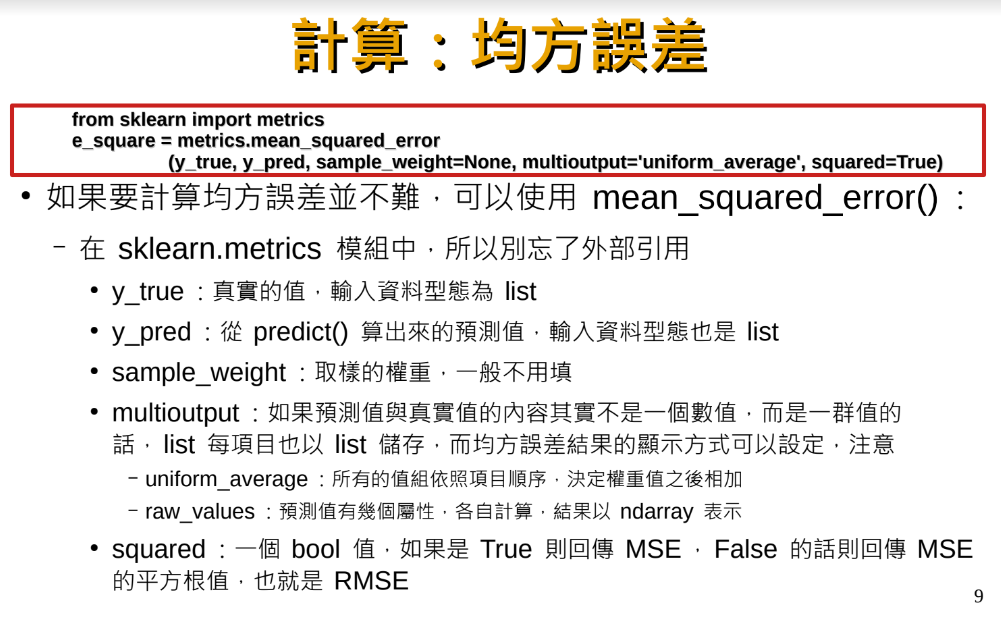
判定係數(R-squared):
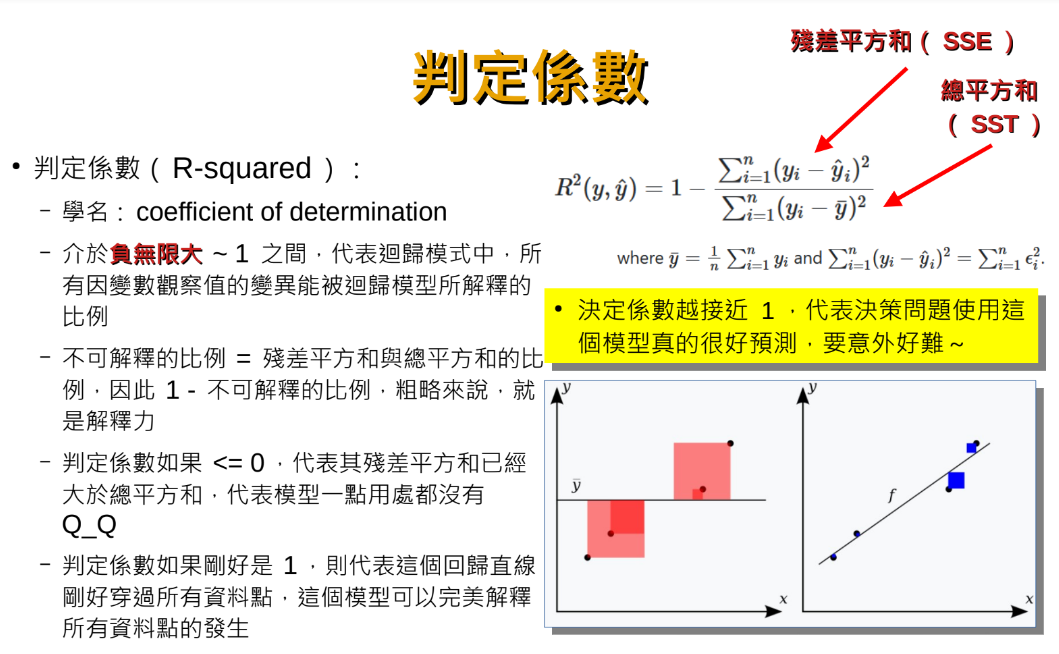
y^: 預測值
y bar: 平均值
計算判定係數(R-squared):
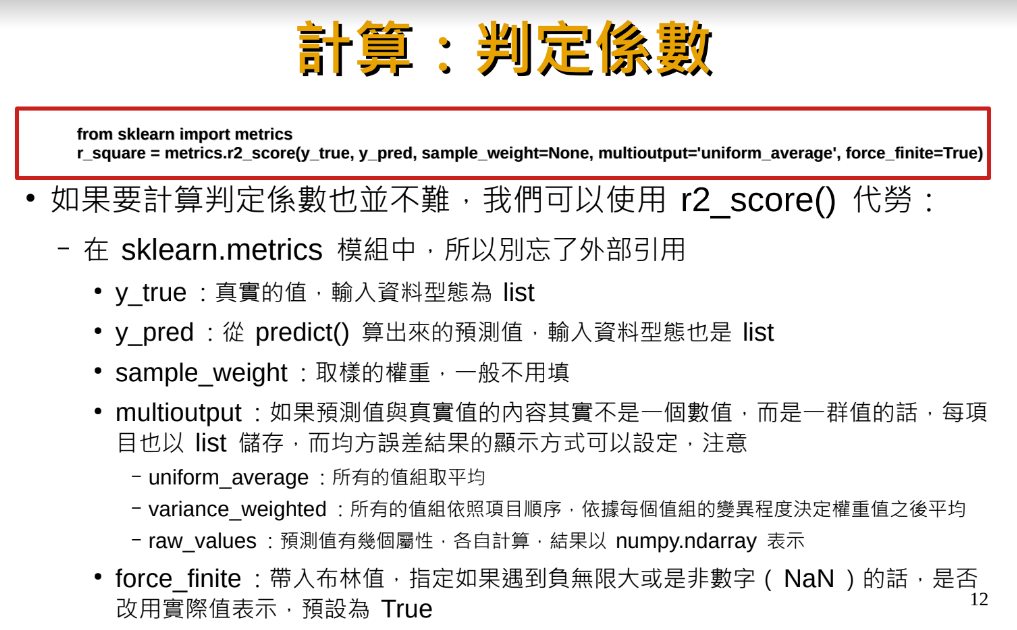
皮爾森積差相關係數
(Pearson correlation coefficient):
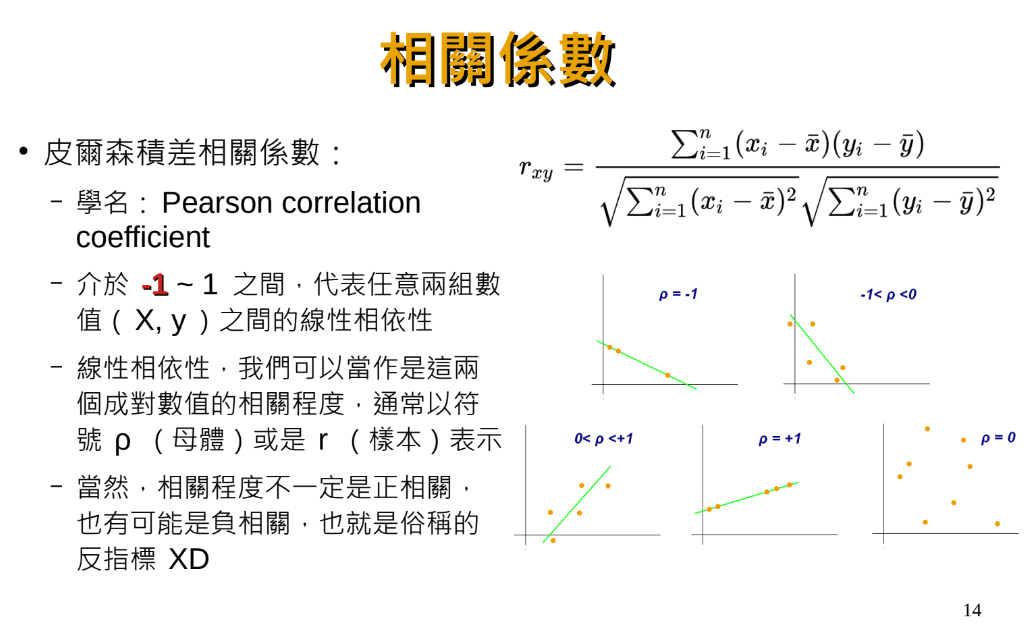
計算皮爾森積差相關係數:
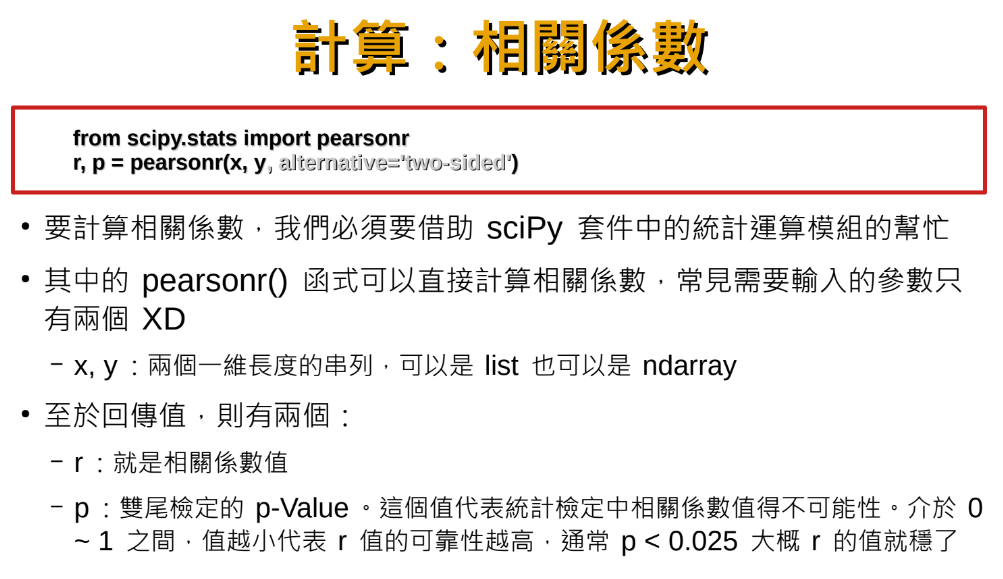
多維度線性迴歸:
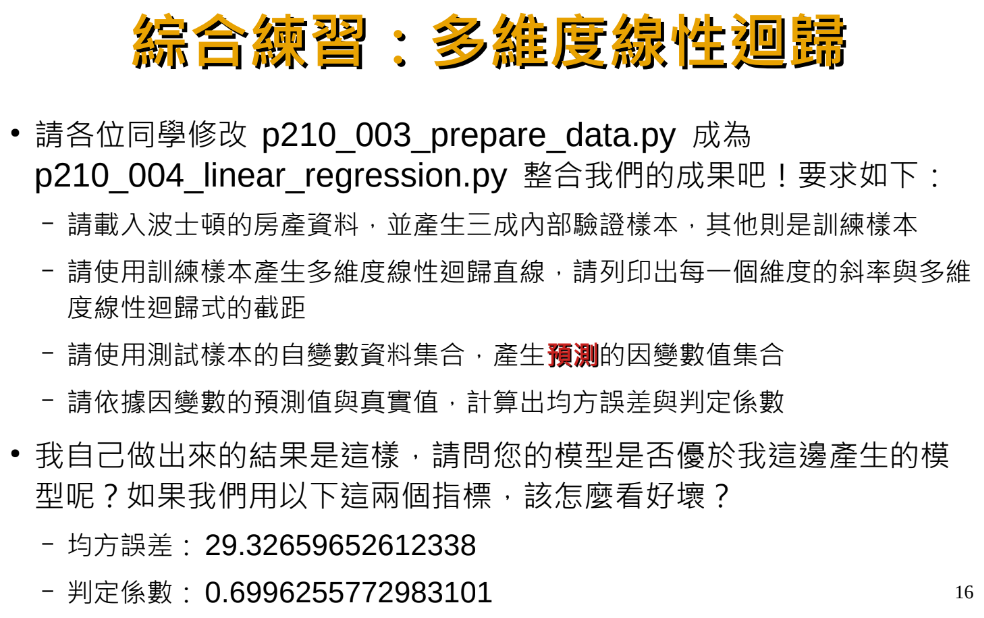
from sklearn import linear_model,metrics
import pandas as pd
import sys
fpath = r”C:\Python\P107\doc\BostonHousing.csv”
dataset = pd.read_csv(fpath) #.shape = (506, 14)
headerList = dataset.columns.tolist()
cols = dataset.columns.size
# dataset.columns.size = 14
# ==================================================
# x = dataset.drop(headerList[-1],axis=1).values #(506, 13)
# y = dataset[headerList[-1]].values #(506,)
# ==================================================
x=dataset.iloc[:,0:cols-1].values #(506, 13)
y=dataset.iloc[:,cols-1:].values.ravel() #(506,)
#沒有ravel()的話,(506,1) 多出一個維度,第二維長度僅有1
from sklearn.model_selection import train_test_split
xtrain,xtest,ytrain,ytest =\
train_test_split(x,y,test_size=0.3,
random_state=42,shuffle=True)
# 1. train_test_split()將原始資料切割為
# xtrain, xtest, ytrain, ytest
# =============================================
# print(“The shpae of training data(X axis):”,xtrain.shape)
# print(“The shpae of training data(Y axis):”,ytrain.shape)
# print(“The shpae of testing data(X axis):”,xtest.shape)
# print(“The shpae of testing data(Y axis):”,ytest.shape)
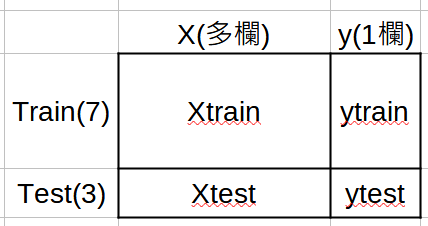
# ==============================================
regr_train = linear_model.LinearRegression()
#2. 建立LinearRegression操作子
regr_train.fit(xtrain,ytrain)
#3. 用. fit(xtrain, ytrain) 影響操作子
ypredict = regr_train.predict(xtest)
#4. 用.predict(xtest) 生出預測值ypredict
print(“The predition data(Y axis):”,ypredict)
print(“The shape of predition data(Y axis):”,ypredict.shape)
mse = metrics.mean_squared_error(ytest,ypredict)
r2score = metrics.r2_score(ytest,ypredict)
# 5. ytest是真實資料,ypredict是預測值,
#有這兩者就可以用來計算mse跟r2_score
print(“mean_squared_error metrics:”,mse)
print(“r-squared metrics:”,r2score)
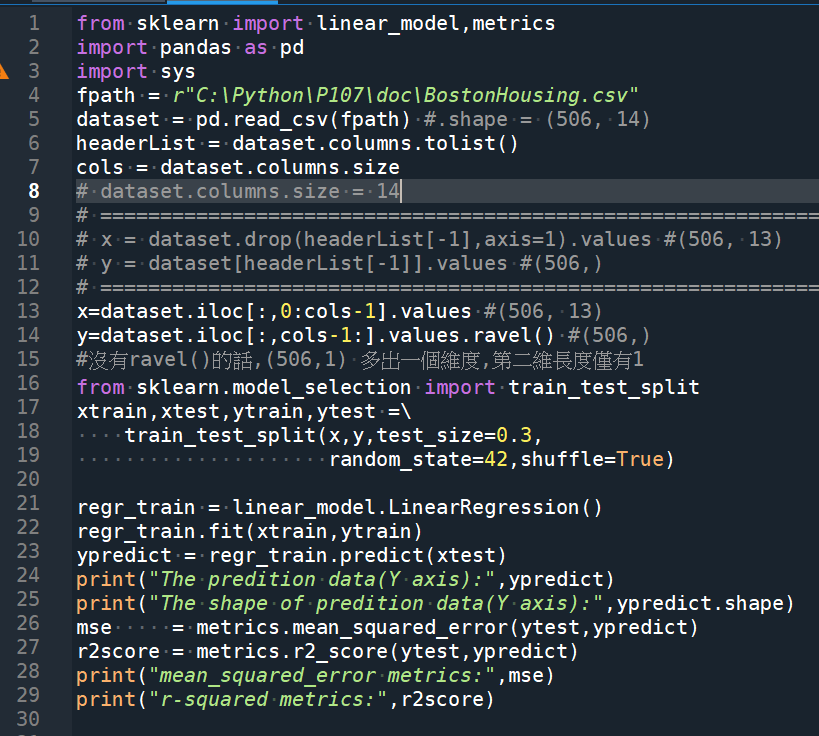
輸出結果:
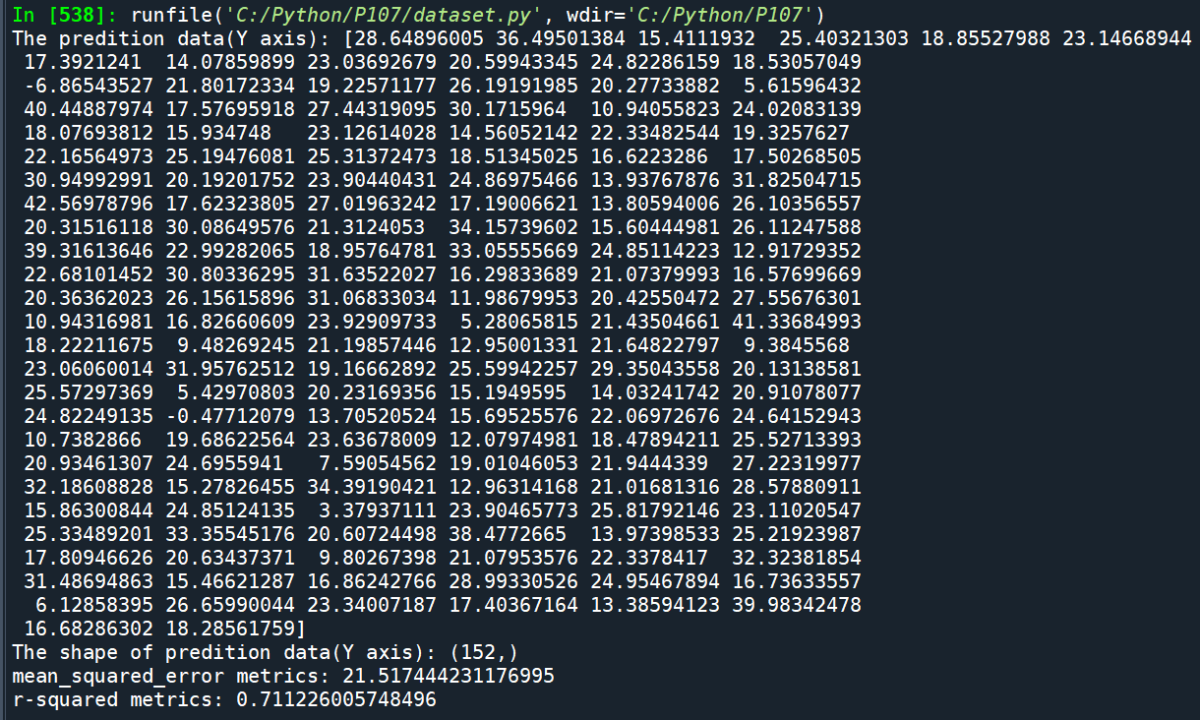
p value:

推薦hahow線上學習python: https://igrape.net/30afN


![Python: list.index() 只能找到第一個元素的index,若元素有重複,如何找出所有index? indexes = [index for index, value in enumerate(my_list) if value == target] Python: list.index() 只能找到第一個元素的index,若元素有重複,如何找出所有index? indexes = [index for index, value in enumerate(my_list) if value == target]](https://i2.wp.com/savingking.com.tw/wp-content/uploads/2024/10/20241010101216_0_12b6c0.png?quality=90&zoom=2&ssl=1&resize=350%2C233)






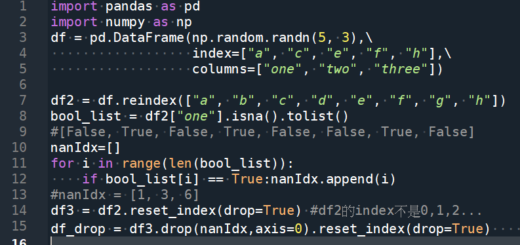
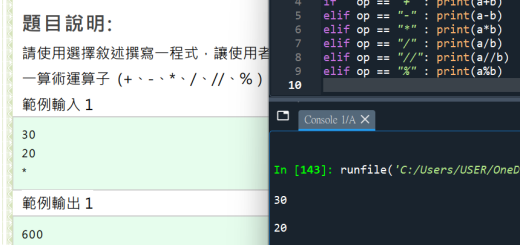
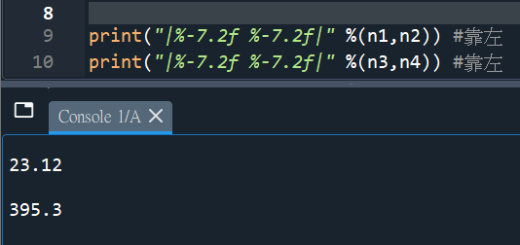

近期留言